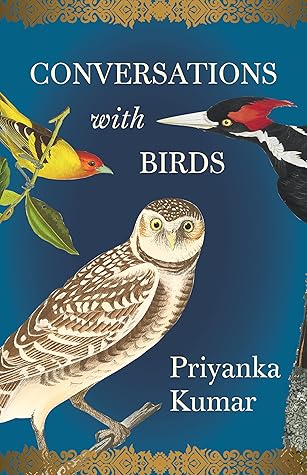More on this book
Kindle Notes & Highlights
Was it the bird’s ethereal beauty I had responded to? Simply the magnificent colors? Its colors had recalled a more sensual world that I had once belonged to—the living, breathing landscape of my childhood, sweetened with juicy guavas, jackfruits, and mangoes, when I played every minute I could in the womb of nature. Lavished by nature, the western tanager easily wears the mantle of the landscape’s soul.
the world peopled with humans felt inadequate. I sought instinctively the vast spaciousness of the natural world.
Water and land are opposing realms, with shorebirds at the edge, translating one realm to another.
Contrary to the mythology about Eve, nature doesn’t cast us out. Eating from the tree of knowledge, the knowledge of nature’s inner working, far from being a sin, only deepens our filial love for the Earth.
The School of Cinematic Arts was endowed by the likes of George Lucas and Steven Spielberg and animation studios were becoming de rigueur, highways to the future, whereas darkrooms—the wombs of still photography—were passé.
It is a rare occurrence when one individual feels compelled to form ties to another. But all effort is wasted unless the one being tamed can recognize what is happening.
Neither the land nor the birds yield their stories all at once. You have to come back again and again, and somehow at the right time to be able to put together a picture of the lives of birds.
The Indian spiritual master Sri Nisargadatta Maharaj once said, “I know nothing about miracles, and I wonder whether nature admits exceptions to her laws, unless we agree that everything is a miracle. To my mind, there is no such thing. There is consciousness in which everything happens. It is quite obvious and within the experience of everybody. You just do not look carefully enough. Look well, and see what I see.” I couldn’t agree more.
When the safe boundaries that we take for granted in everyday life disappear, we are exposed to startling risks but the experience can also crack the heart open. It strips away what is unnecessary. That is how I still feel after yesterday’s expedition: raw and ajar. At any moment, while absorbed in transient joy or sorrow, we are only dimly aware that we stand on a precipitous mound. The road ahead plunges down—we can’t see the end point, yet it patiently and inexorably awaits us.
Reversing the damage we have done to the Earth sometimes feels as impossible as carrying a mountain in our arms. There is no magic herb that can heal the wounds caused by the inexorable march of industrialization. What remains in our power, however, is to alter how we see the natural world and to appreciate that this finely tuned biome (what’s left of it) sustains numberless creatures, including us.
Who we will be (and whether we will continue to be) tomorrow depends on whether we have the vision to see the treasures we already possess. And if we truly own this treasure-filled vision, we will naturally want to heal the damage we have inflicted upon the earth and heal our relationships with the animals who are one with the land, more eloquently than we can ever hope to be.


